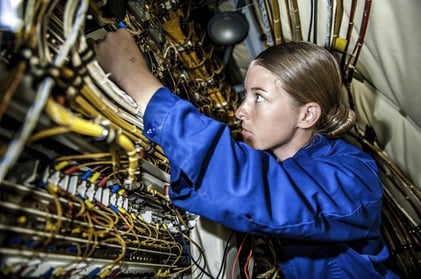Image provided by Shutterstock
There are so many people working on gender diversity in tech.
We all know that diverse teams perform better and in a competitive market, everyone is battling for talent. In spite of this, women in tech remain an elusive group. The tech industry is full of engineers who solve difficult and complex problems every day, so let’s turn these skills towards solving the problem of poor diversity.
Unknown problem, unknown solution
A senior software engineer colleague of mine and Head of Education at Sparta, Stephen Reid, starts every engineering course with a simple lesson: unknown problem, unknown solution.
A software engineer’s first task is to work out what the ‘unknown problem’ is so they can design and build a solution. Similarly, the idea of poor diversity in tech sits in the ‘‘unknown problem, unknown solution’ field. The issue with diversity is that we don’t really have good data that tells us why there aren’t more women in tech and that’s largely because a lot of the problem is hidden.
The prevailing commentary seems to be that tech companies are, whether consciously or not, propagating a sexist status quo. But if we’re going to attack this like an engineer, we need to look at diversity from as many angles as possible and dig a little deeper. What are some of the other possible problems? Are company hiring practices to blame? Are companies failing to incorporate truly inclusive talent strategy? Could it be that universities are to blame for not getting more women into their courses? Perhaps it’s schools failing to encourage more girls to study STEM subjects? Dare I suggest it’s the parents’ fault for funnelling kids towards certain aspirations? Or maybe it’s just women: are we just worse at engineering? The fact is, we don’t know what the problem is. Not for sure. Too many of the strategies used by businesses are based on assumptions that are little more than anecdotal at best. We aren’t making enough effort to understand the other pieces of the puzzle.
Working together for women
The good news is that you don’t need a massive budget to start validating your assumptions. Think small and validate one assumption that is within your control. For example, if you suspect you aren’t getting enough women into your team because you aren’t interviewing enough women, instigate the Rooney rule (mandating that you interview at least one female candidate per vacancy) for half of your talent team and not the other half. Test and see what your results are. Once you validate the parts of the picture that you can control, you get to drive questions down to the next level.
The crucial thing here though is to make sure you don’t just chuck the problem over the wall and assume it’s the next guy’s problem. Businesses drive the priorities of the supply chain. If tech businesses press their hiring, community and education partners to focus on diversity, it will happen. A great example of business shaping supply chain is Duolingo, who target their graduate hiring around universities that focus on good gender balance on their computer science degree program. Maybe we need to follow a similar path but examine even further back, such as looking at the impact a parent can have on their daughter’s career choices? Katie is one of my engineers that recently trained at the Sparta Academy. She told me that having studied history at uni, she would never have considered looking at coding were it not for the fact that her mum heard about coding on the radio and suggested she give it a try. What if there are thousands of other ‘Katies’ out there whose mums didn’t hear about coding on the radio?
Thankfully there are some great organisations working to improve the problem of poor diversity in tech at earlier stages. Code First: Girls targets recent graduates with coding training, SEO London targets undergraduates with career support and Codebar supports women at all stages of their career with learning tech skills. All are doing fantastic work to change the shape of technology’s future, solving little pieces of the puzzle for the parts they can directly influence. Sparta Global also holds a unique piece of the puzzle; we help people move into tech careers by giving them intensive full time training and their first tech job to help them make a full transition. Ultimately the only way any of us can move the needle is if tech businesses commit their focus to examining the deeper challenges in the talent supply chain.
First published here
About the author
Lexie Papaspyrou, Head of Academy, Sparta Global
Lexie Papaspyrou started her career as a PR consultant, pivoting into technology when she joined Apple, initially as a graduate manager and then training delivery in one of Apple’s training stores. In 2014 she joined American tech education company, General Assembly, where she produced their flagship product – the Web Development Immersive Coding Bootcamp for its London campus. After seeing the program through a period of high growth, she moved to Sparta Global where she is currently Head of Academy. Each year her team trains hundreds of young people across the UK in the skills to start a career in tech. Aside from her work at Sparta Global, Lexie is an outspoken supporter of Women in Tech and Diversity & Inclusion initiatives. She is an organiser at Codebar (a non-profit that provides free coding workshops for groups who are underrepresented in tech), a signatory of the Tech Talent Charter, and has been invited to speak as a subject expert for various research and industry projects on talent, diversity and tech ethics.






